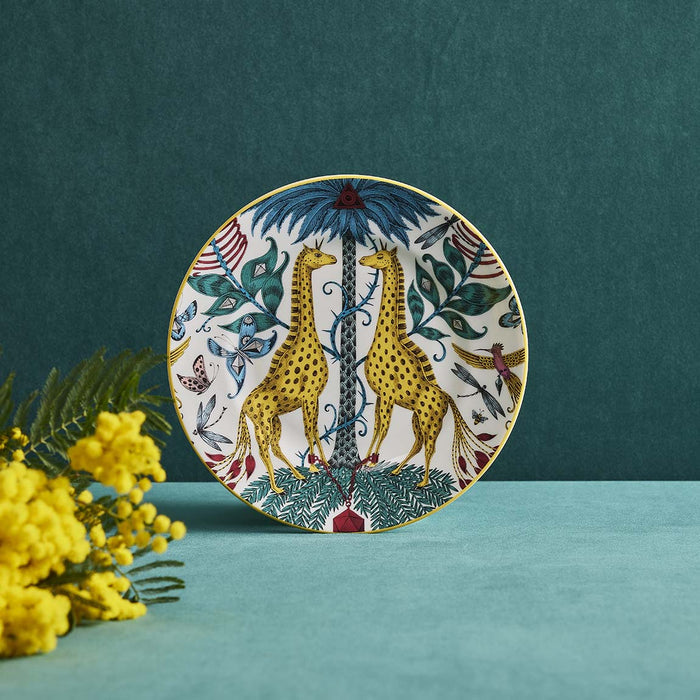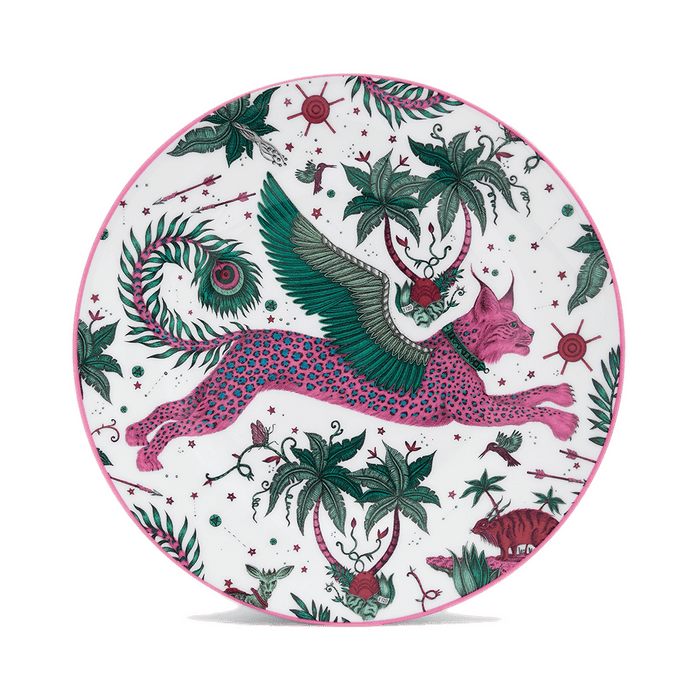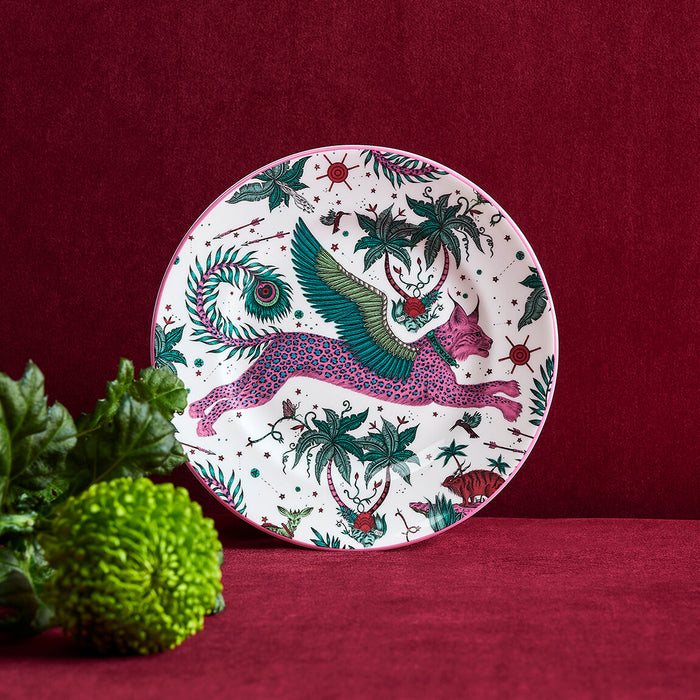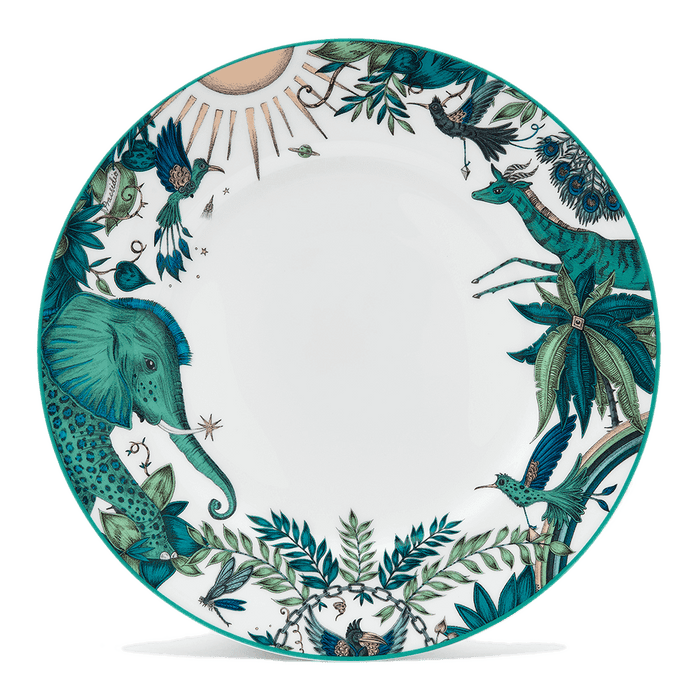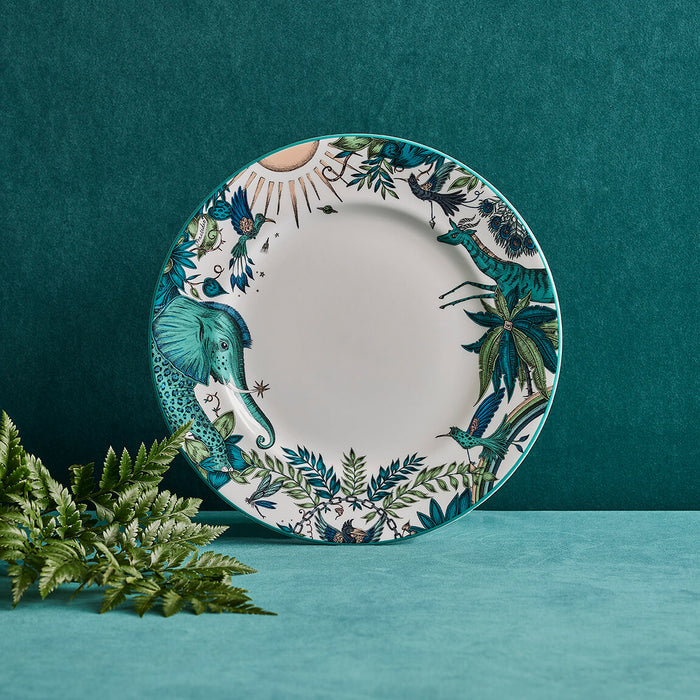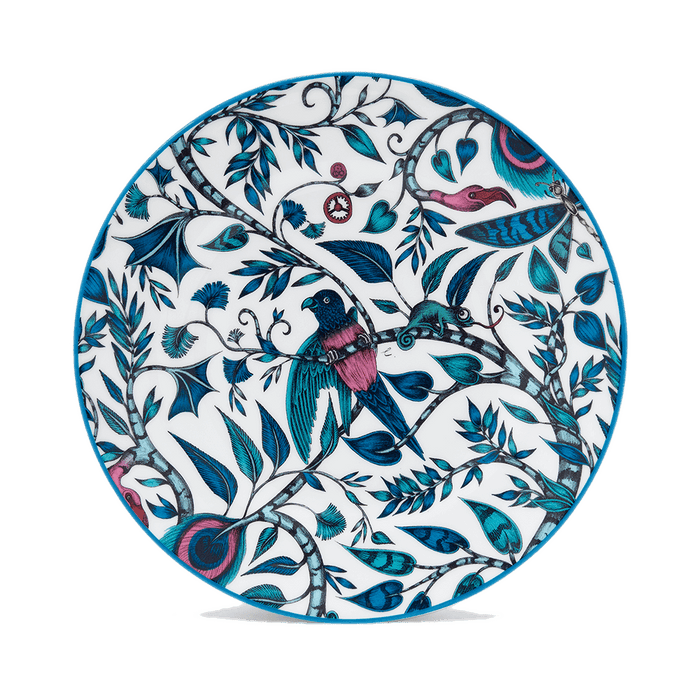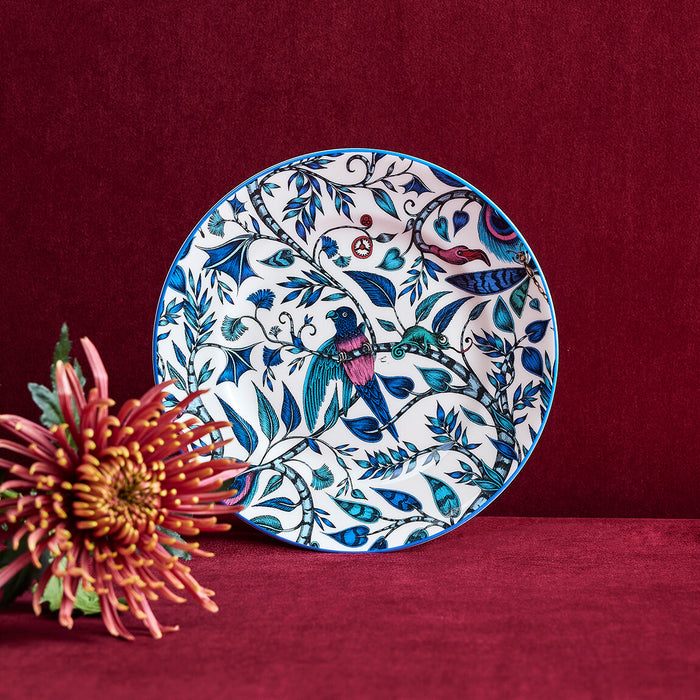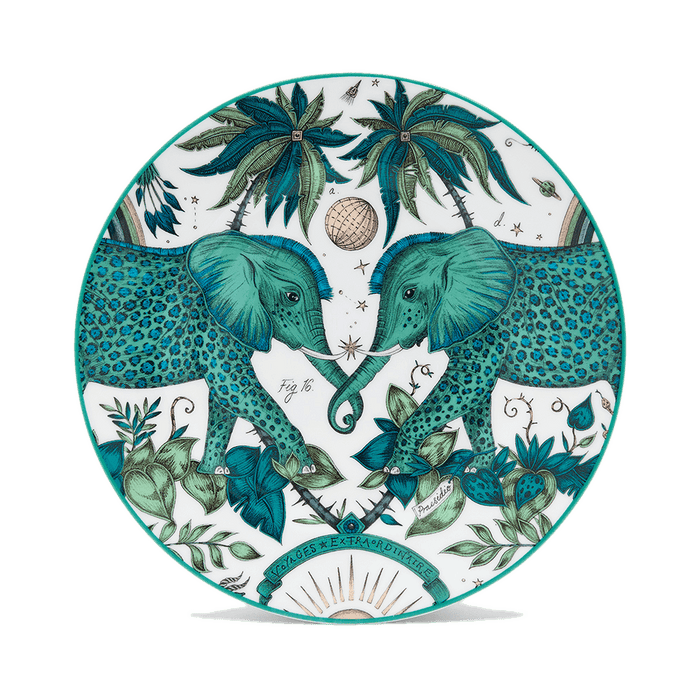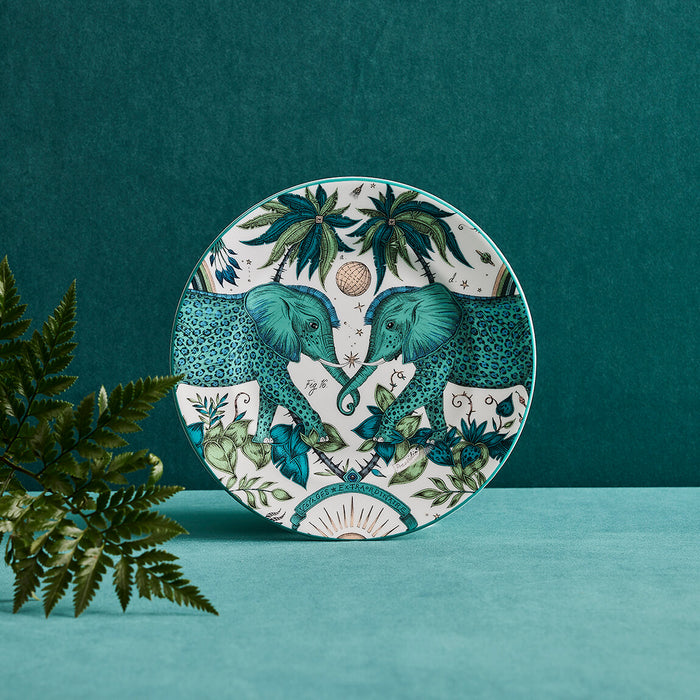From £30
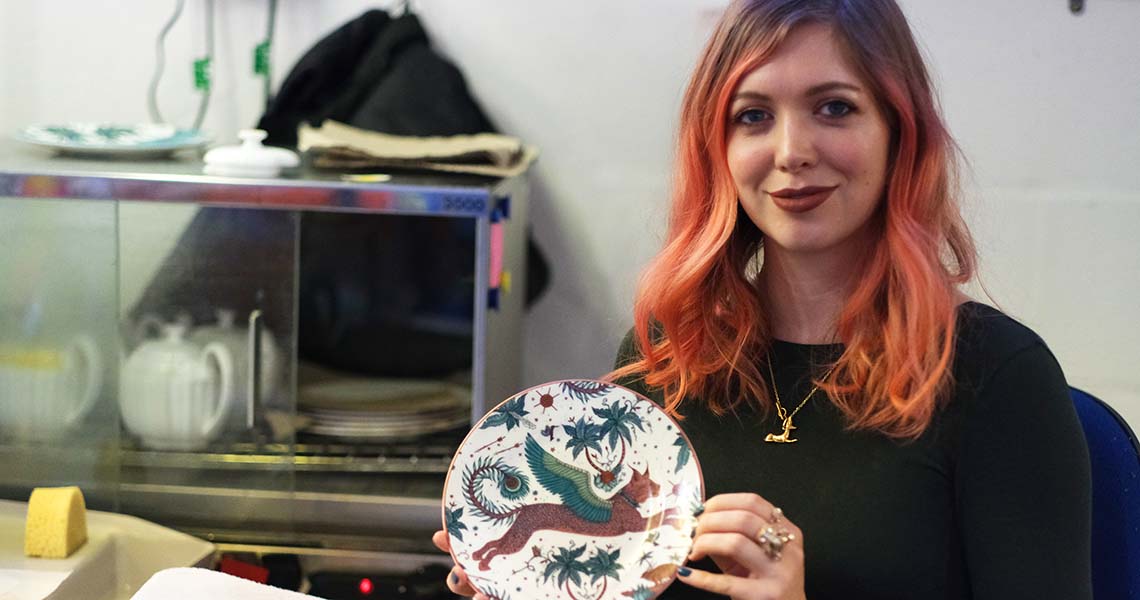
The Making of an EJS Plate
The Making of an EJS Plate

1. Lithographs are printed
Firstly, the lithographs are produced. Using 12 separate layers of colour printed individually using a silkscreen printing method.
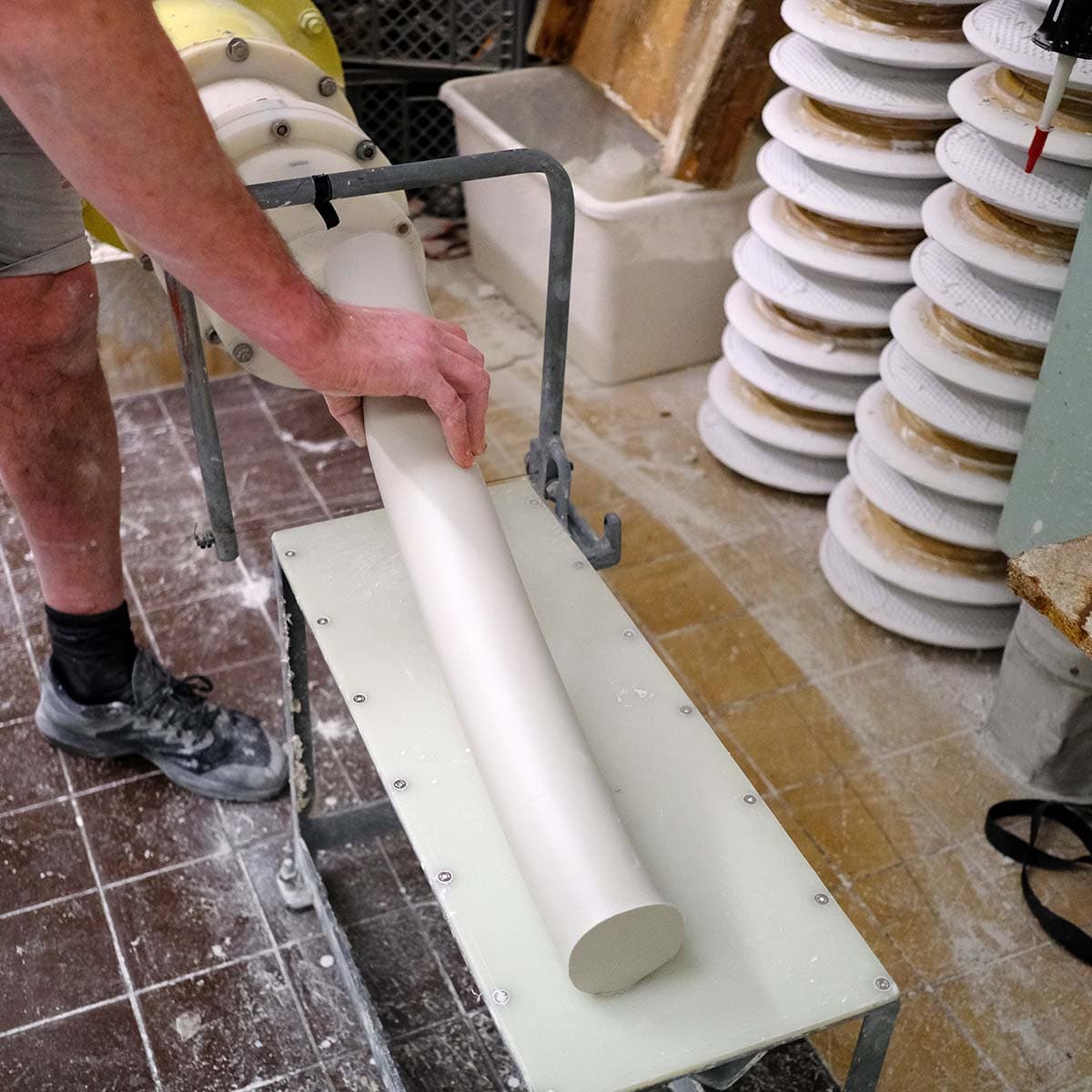
2. Clay filtered and extruded
Then, at our fine china factory, the bone china clay is filtered and extruded to create rolls of clay, ready to be added to the moulds.
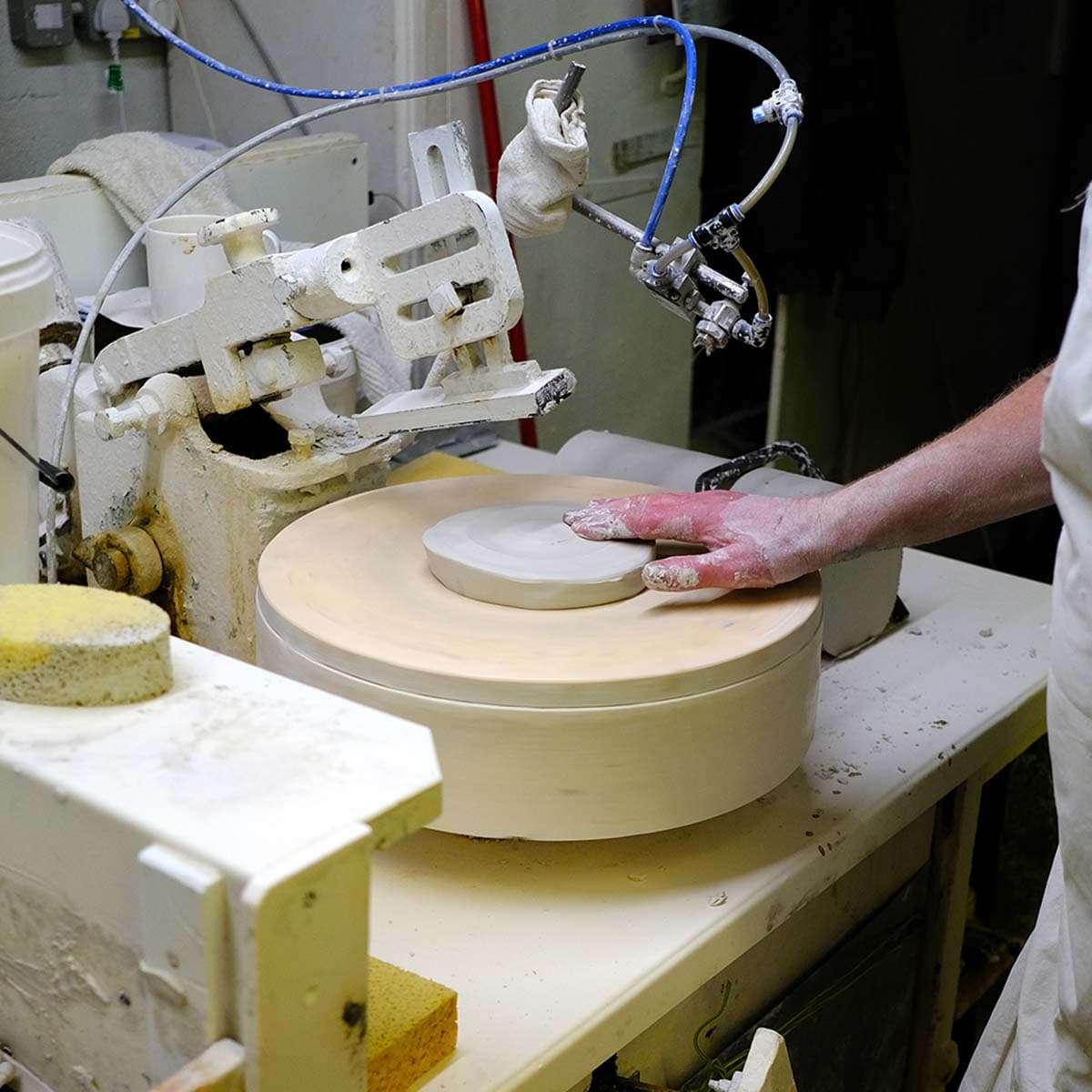
3. Moulding
The clay is moulded into the to the plate’s shape by first stretching the clay rolls and then shaping them by hand, with the aid of a mould, on a pottery wheel.
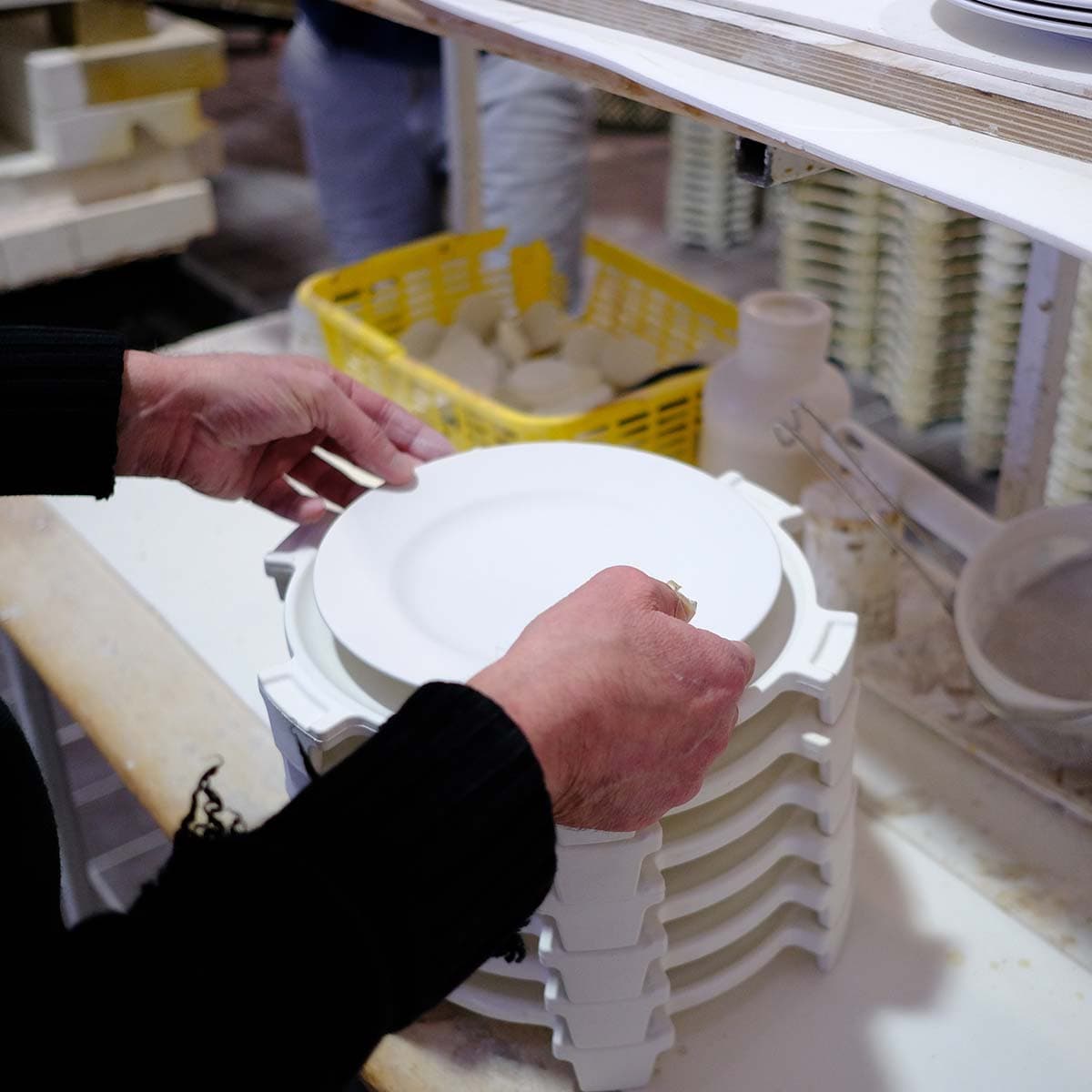
4. Biscuit firing - 1240°c
In this first firing, residual moisture, crystalline-bound water as well as organic components are dissolved and burned from this dried blank. Through this the moulded blank hardens and changes to a stable condition as a fired body.
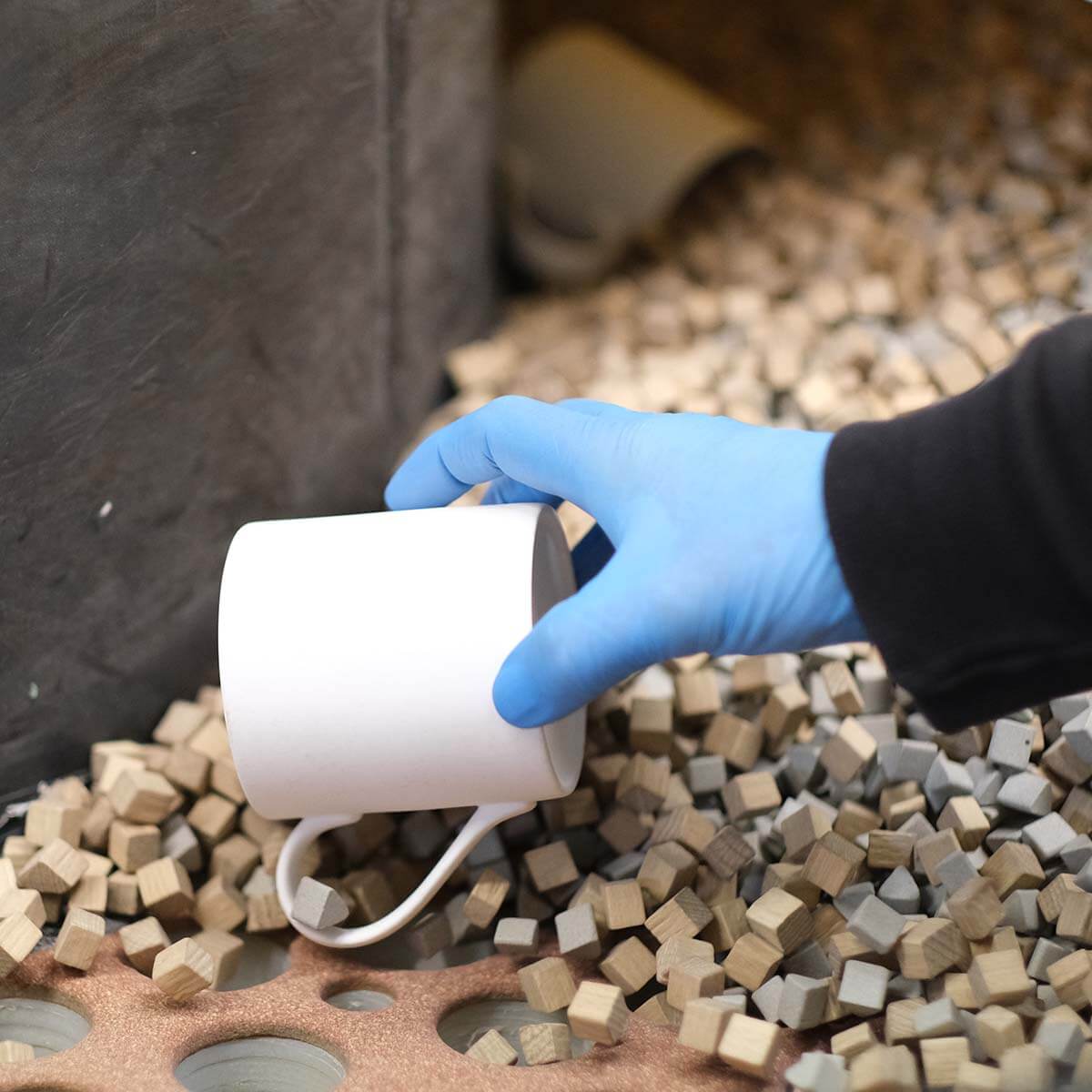
5. Vibro
The biscuit fired plates are added to the Vibro machine to clean and polish the ware before glazing (demonstrated with the mugs here)
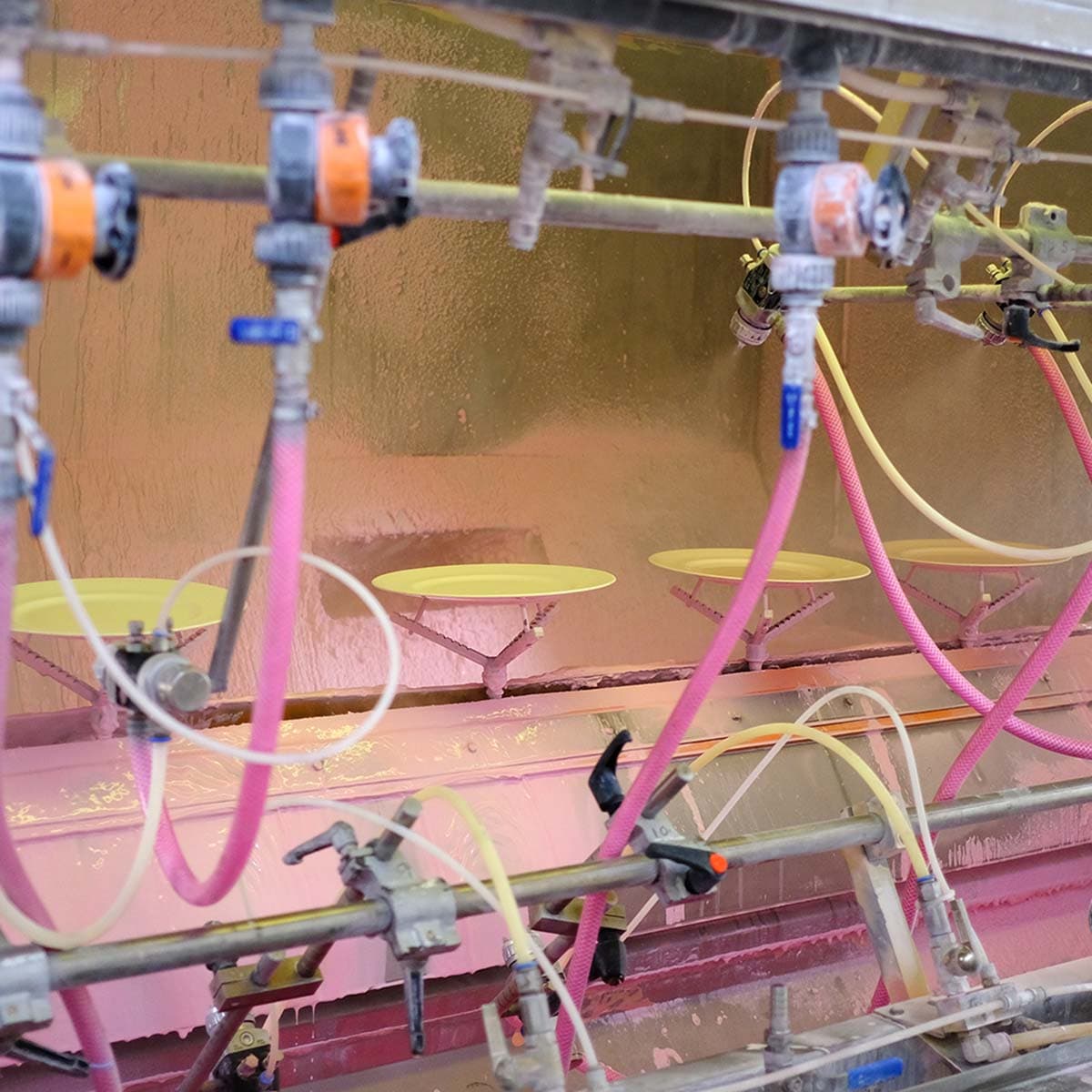
6. Glazing
A liquid glaze is added to each plate using a conveyer belt. Taking the plates through the pink liquid glaze and onwards to a heated chamber to dry.

7. Foot-wiping
Each plate is foot-wiped to avoid them sticking to the kiln batts during glost firing.
.jpg?v=0&options=)
8. Glost firing - 1085°c
During the glost firing (also known as the glaze firing or second firing) process, the glaze melts on the fired body and forms a vitreous, glass-like surface.
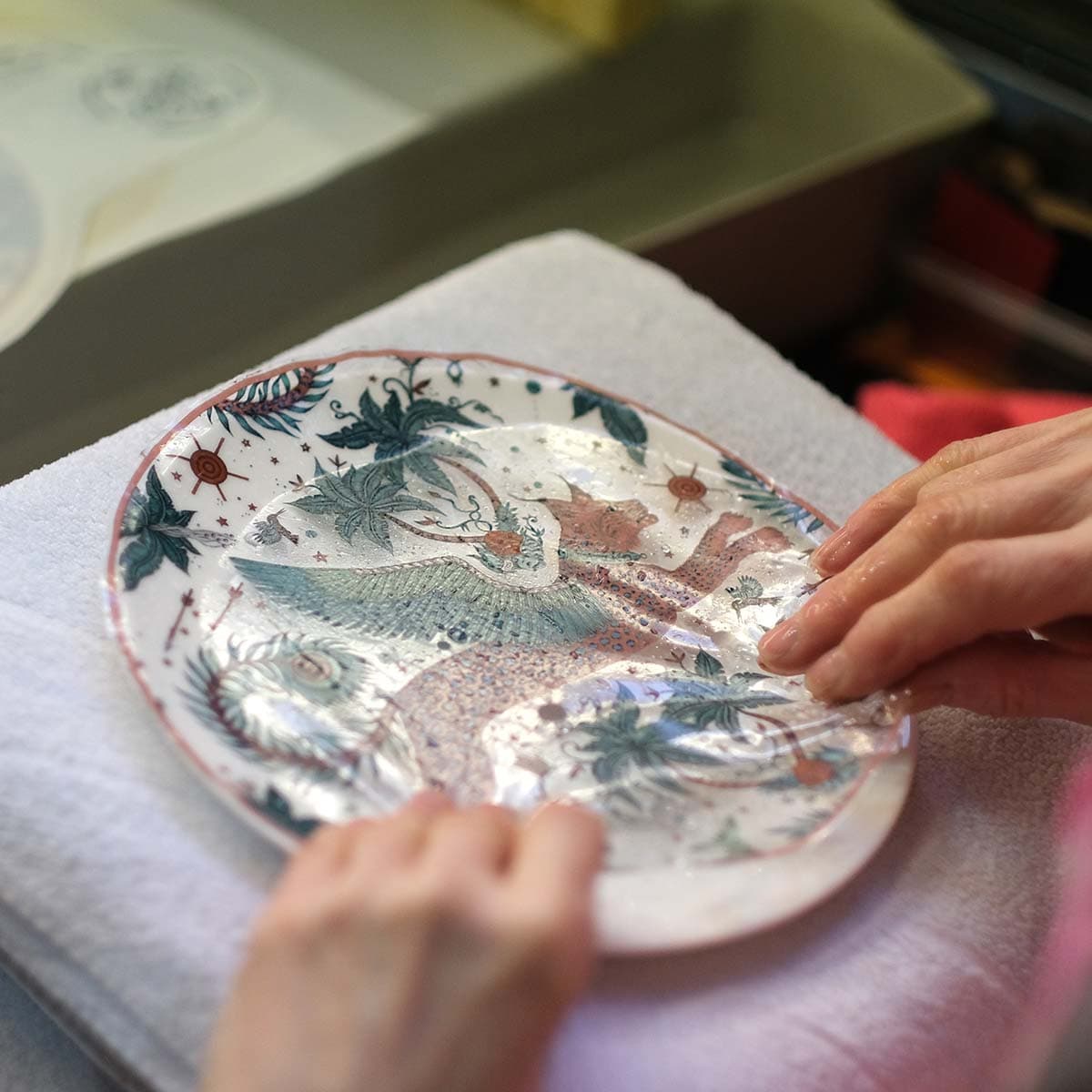
9. Lithographs applied
The lithographs are dipped in water which lifts the design from the backing and these are then slid onto the plate and positioned with the help of a sponge.

10. Final firing - 850°c
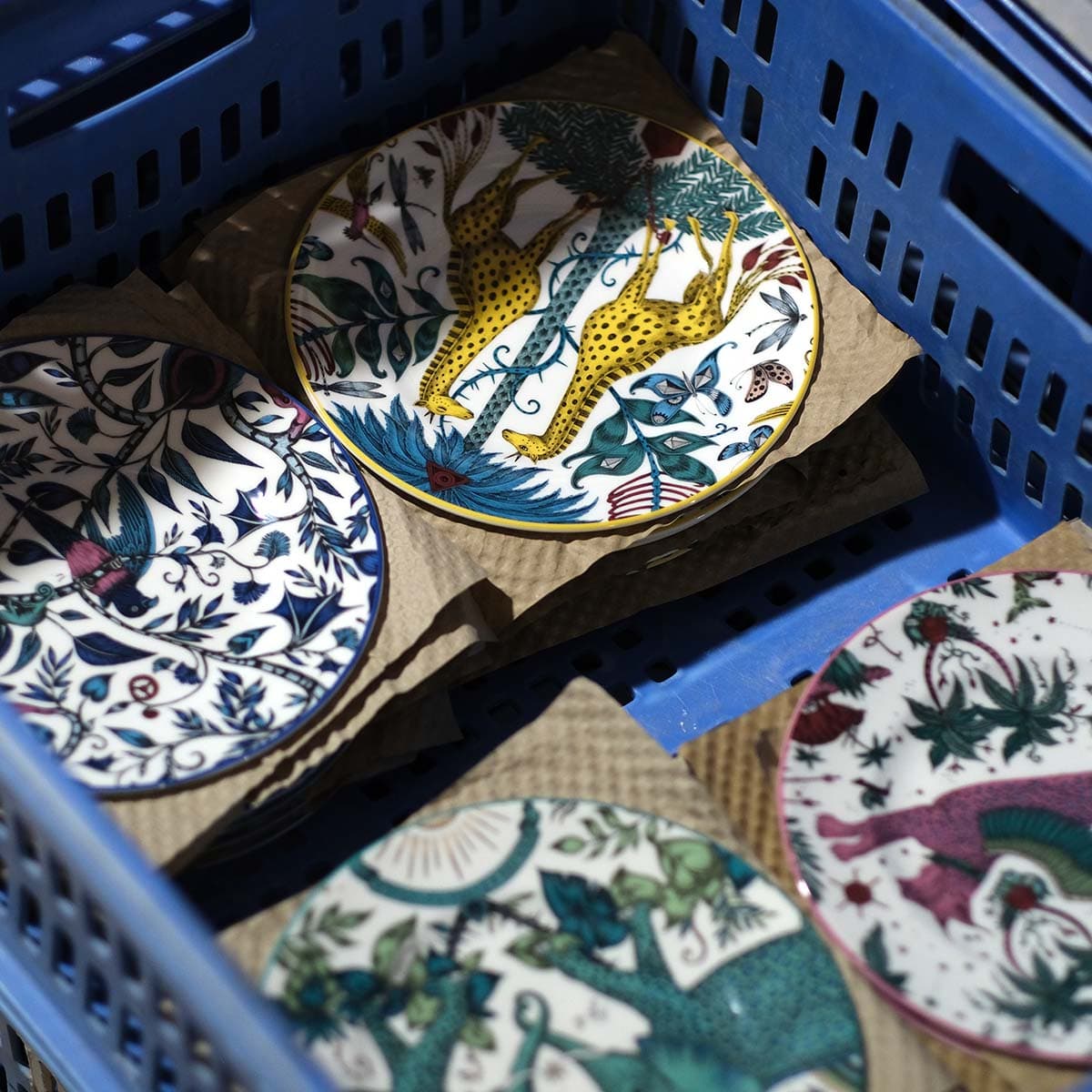
11. Quality control and packaging

